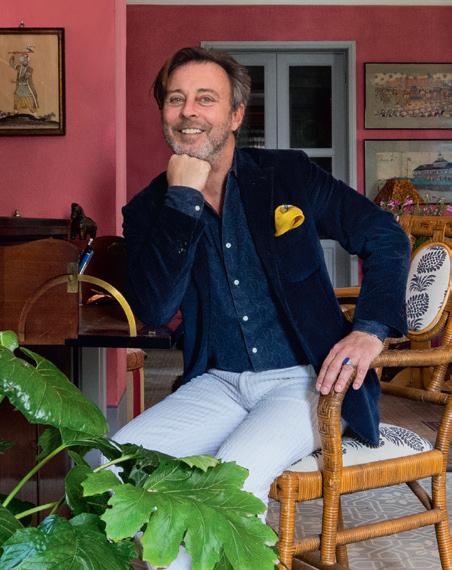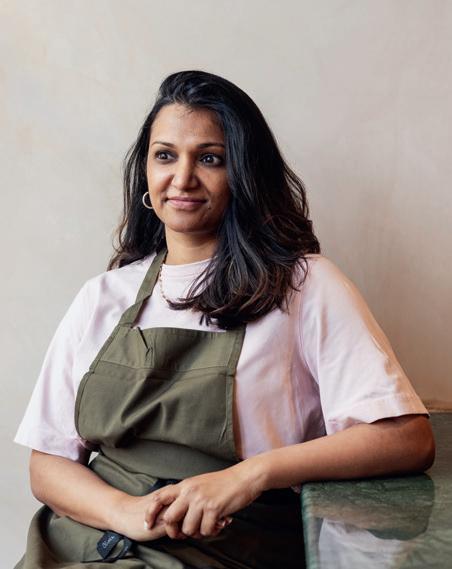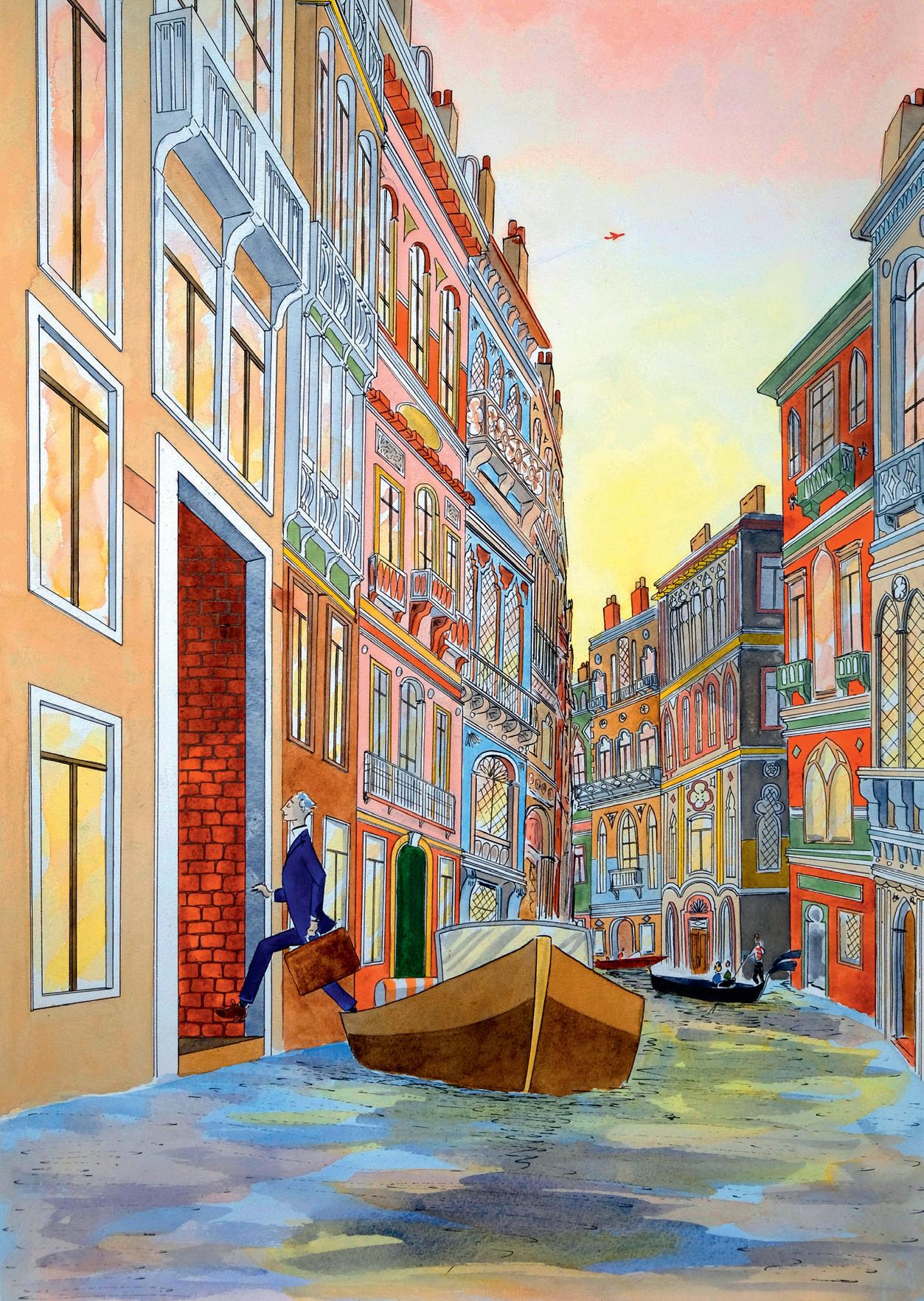The City Issue

What CATH KIDSTON did next – and her bright, colourful London house
MODERN MARVELS 25 SCULPTURAL CHAIRS
INSIDER GUIDES TO ATHENS + KYOTO


What CATH KIDSTON did next – and her bright, colourful London house
MODERN MARVELS 25 SCULPTURAL CHAIRS
INSIDER GUIDES TO ATHENS + KYOTO
Having returned to Japan at the age of 13 after living in Canada, Mihoko decided she wanted to be a writer. After graduating from The University of British Columbia, she started as a staff writer at The Nikkei, going on to work on the Nikkei/Condé Nast launch of Vogue Japan, where she spent two decades. Mihoko has written for Condé Nast Traveler and Vogue Singapore, and her first book, Japanese Interiors*, was published in 2022. She reminisces about Kyoto from page 156. When there, she has two rituals: visiting her ancestors’ grave and going to Inoda Coffee to order its signature blend. How do English and Japanese interiors differ? ‘In England, the garden is brought inside with botanical prints and wood furniture. Japanese interiors have a view of the garden from inside, or a microcosm is recreated indoors with ikebana flower arrangements or bonsai plants.’

With an architect father and great-grandfather, design is in Nicolò’s DNA and, by the time he was six, he was moving furniture round the house. In the late 1980s, Nicolò studied history of art at Sotheby’s and stayed for 30 years. ‘After I decorated the London house of Mr and Mrs Etro, private clients followed across Europe and beyond,’ he says. With homes in Tangier and Milan, he was well placed to edit Inside Tangier and Inside Milan* for Vendome: ‘They give an insight into my aesthetic world, featuring many of my friends’ homes.’ On page 176, he writes about leaving Casa degli Atellani, his family’s Milanese home, and his fresh start in part of a palazzo in Venice. When you are not working, where would we find you? ‘In my beloved Casa Tosca in Tangier, sketching new designs for my furniture line, or in its beautiful garden, designed by my friend Umberto Pasti.’

Born in Coventry, Cynthia started her relationship with Sri Lankan cuisine when her parents moved back to the country while she was at university: ‘As I cooked with my mother in her open-fire kitchen in our village in Jaffna, I began to think it could be a career for me.’ The pandemic gave her the opportunity to write Rambutan*, which won the Fortnum & Mason Debut Cookery Book award in 2023, and she opened her restaurant of the same name in Borough Market, SE1, last March. Cynthia’s tip for entertaining is to cook ‘a big, delicious rice dish – chicken, lamb, pumpkin or aubergine – so filling and easy’. She suggests spring-flavoured Sri Lankan dishes from page 145. Who has been your biggest inspiration? ‘M.I.A. has blazed a trail for all Tamil people and has never stopped shining a light on Sri Lanka politically, through her art, and her albums and music videos’ m

Last year, my family sold our home – a 15 th-century property in the heart of Milan called Casa degli Atellani –where I'd been living with my father, aunts, cousins and even a stepmother or two. Steeped in Milanese history, it has also been a receptacle of family aspirations, creativity and memory.
My great-great-grandfather bought it; his son-in-law, Piero Portaluppi, restored it twice (after two World Wars); and it has been further remade over the subsequent years to accommodate the family. Now, over 100 years later, it has passed to another industrialist – Bernard Arnault, who will hopefully peel back a few layers to recreate a version of Portaluppi’s original design. (The recent addition of the property to Italy’s national historic houses register suggests that he might not have much option.)

The questions I have repeatedly been asked since (Are you sad? Is it traumatic? Why did you sell?) are the most predictable. I am somewhat sad, it wasn’t traumatic, and we sold because the family is growing and the space couldn’t be further divided. The more interesting question – at least for me – is where are we all going to go? After six generations of living in the same palazzo, the excitement at the possibility of making a new home is palpable.
Several of my extended family members have moved to another building round the corner, Casa Portaluppi, where my father Piero and I still share an architecture studio. Dad found a penthouse off Piazza San Babila. From the leafy terrace are towers in every direction – it is Milan at its most urban and I get the impression that he set out to trade Renaissance Italy for New York’s Fifth Avenue.
His house has always contained several modern pieces – be it art or the angular furniture of his own design – but the balance has remained formal. In Casa degli Atellani, the dining room walls were clad with Persian-green boiserie and silk curtains were hung between a pair of Roman marble columns before a mahogany dining table. But now he is tipping the scale in an entirely different way. I overheard him in the office considering Venetian blinds and a bookcase made of glass and steel. His excitement at creating this new home is contagious.
On a cold, sunny afternoon last December, I invited him to inspect the new home I found for myself: an old wreck with eight windows on the Grand Canal in Venice. As we arrived by water taxi at the frescoed building, the canal lapped against the exposed bricks and rusted porta d’acqua (water entrance) that would need
repointing and restoration. My father is a man of few words, so I filled the silence with talk of the difficulty of Venice house-hunting.
The Venetian language is distinct from standard Italian and, before speaking with an estate agent, one needs to learn a bit of new vocabulary – altana (rooftop terrace), androne (ground-floor entrance hall), portego (wide, multi-purpose hallway). The list goes on. Throw in the complication of having to know which campi (squares) are filled with noisy tourists or drunk college students, which streets flood with the acqua alta (high tide) and which canals get lots of boats, and it makes for a complex search. Slowly, and after viewing many houses, I began to know what I was looking for.
From speaking with friends who had undertaken renovation projects, I knew that construction in Venice would be challenging but not impossible. In fact, it is much easier if you are on a canal, as that speeds up getting materials into the house. At least, this is what I started to tell my father, who had not yet made any comments. We disembarked on an adjacent dock and I took him into the building through the street entrance.
The androne was lit with a cage lamp that builders use and my father asked sarcastically if I had already begun the work. We went up the stairs to the entrance of the flat and, as we walked in the door, I relaxed when I saw him smile. The sun was setting across the Grand Canal behind the Baroque church of San Stae and the blue lagoon was glittering before us. ‘What a beautiful project,’ he said.
It’s a new chapter for both of us. I found a pied-à-terre in Brera so haven’t left Milan entirely, but I’m looking forward to Venetian life. Some people harp on about the tragedy of letting go, but it’s so much fun to find the joy in new beginnings m nicolocastellinibaldissera.com